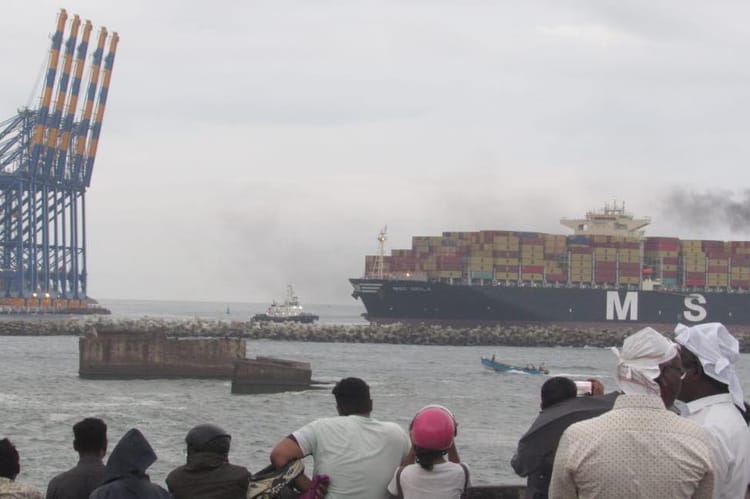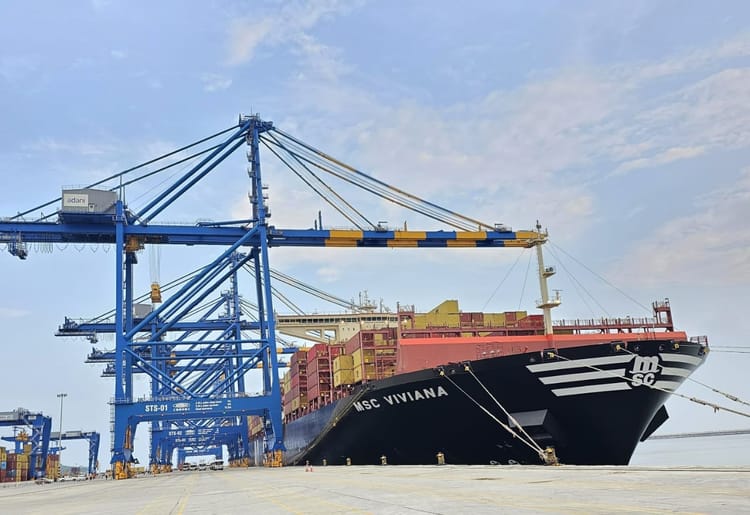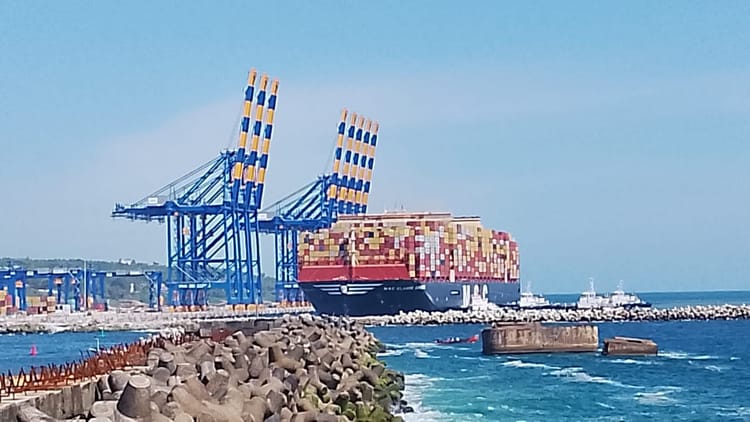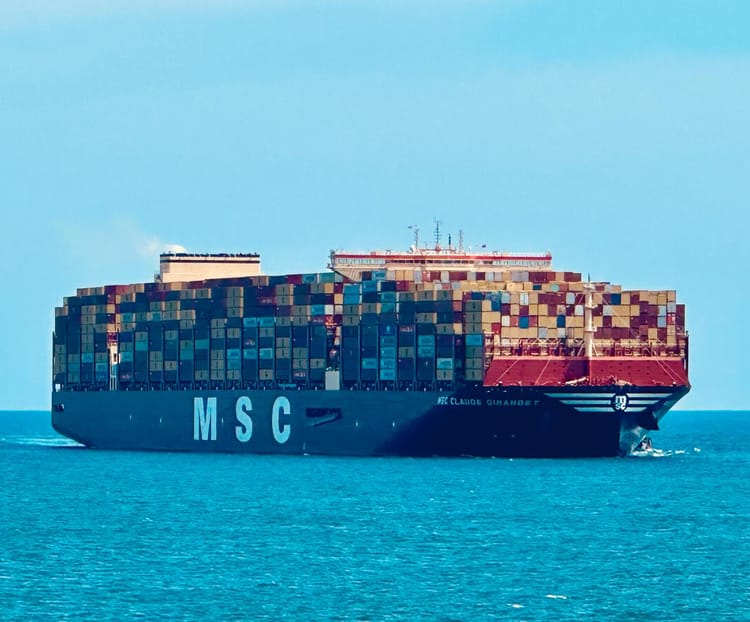The Calming of the Furious!
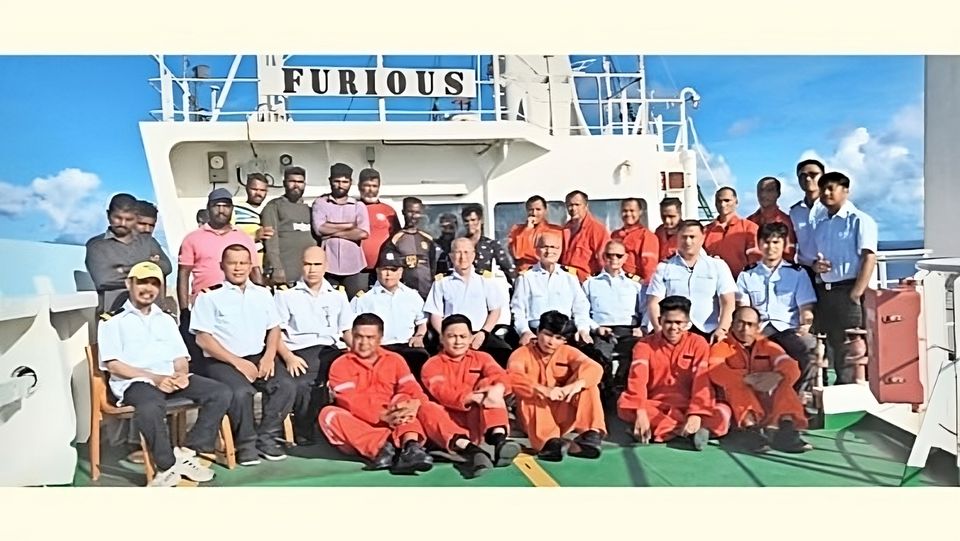
A protest against the Vizhinjam International Container Transshipment Port, currently under construction in India, went on for nearly 140 days, attracting global media coverage. Initially, the protestors led by the Latin Archdiocese of Trivandrum demanded a study on the erosion of the shoreline caused by the port's construction, but their demands escalated to a complete halt to the construction itself. A prevailing sentiment among the protestors was that ports and ships posed a threat to the very existence of their coastal region. Consequently, a dominant slogan emerged, urging the Adani company, responsible for the development of the Vizhinjam port, to abandon their plans in Kerala and withdraw from the region.
To bolster the strike and incite the already agitated fishermen participating in the protest, various pressures were applied, often exaggerating the losses suffered by the fishermen due to ship-related incidents. Of particular significance was the infamous shooting of Kerala fishermen by security personnel aboard the Italian ship, Enrica Lexie. Additionally, the losses incurred by the fishermen in occasional minor ship accidents were amplified for maximum impact.
Amidst this atmosphere of unnecessary fear-mongering, a noteworthy incident unfolded between the sea and a ship, warranting international attention.
On April 17, MV Furious embarked on its journey from Nacala port in Mozambique, Africa. The ship, captained by Loquias Joel Barbado, was manned entirely by Filipino nationals, comprising a crew of 22. Their destination was the port of Dangjin in South Korea, and the voyage was estimated to take about a month. However, as of now, there is no certainty* that the ship will arrive on schedule due to an unexpected encounter with a fishing boat.
Simultaneously, on that very same day, the boat Lourdes Mata set sail from the fishing port of Pattanam in South India. The ten-member crew, consisting of eight individuals from the village of Vizhinjam in Kerala and two from Tamil Nadu, embarked on a month-long fishing expedition in the Indian Ocean. This journey was uncharted territory for them. Just five days into their venture, and sailing for approximately 500 nautical miles, disaster struck when their boat's engine malfunctioned. The exact date was recalled by Rajesh, a member of the team, as April 21. Despite their attempts to fix the engine using their limited knowledge, their efforts proved futile. As the days passed, their initial hope of a quick resolution dwindled. Their despair grew with each passing day as they found themselves stranded in a desolate part of the sea, far beyond the reach of any ships or boats. Since the breakdown, their boat had been drifting about 50 nautical miles each day.
"Why wasn't the boat anchored?" one might ask. Well, in the deep sea, which reaches depths of around 3,000 meters, it is impossible to anchor. Even having a water parachute onboard their boat proved to be of little use. Rajesh tried to make sense of its purpose, questioning how a parachute could function in water. It wasn't like a parachute used in the sky; rather, it was designed as a water parachute. Rajesh was the one who first noticed its presence. His assumption was that when the parachute was deployed, the water entering it would act as a small anchor, much like an umbrella. Days and nights melded together as they remained adrift, with no sight of any passing ships. This was particularly disheartening for the crew, who had encountered ships regularly during their fishing expeditions. Trapped in the vast, shipless sea, they were left to lament their fate. Rajesh's thoughts suddenly turned to his children, Rixon and Ritika, and his wife, Vennila. Each member of the crew contemplated their parents, families, and relatives, offering prayers for their safety. The captain of the boat intermittently inspected the engine, frustration etched on his face. Occasionally, he grumbled about a piston being stuck due to an oil leak.
As the days dragged on, the stranded crew found themselves adrift in the vast expanse of the ocean, their desperation intensifying with each passing moment. Questions regarding their precise location and the body of water they were in appeared inconsequential amidst the mental and emotional turmoil they endured. Despite having GPS on board, they were in no condition to lift their gaze or recall the latitude and longitude coordinates. They made attempts to establish contact using wireless communication with any nearby ship. However, their distress signals went unanswered, leading them to accept the grim reality that they were marooned in an abandoned sea, disconnected from the rest of the world.
The anxiety and fear experienced by those who face nothing but the spectre of death at sea are unimaginable to us, safe on the shores.
However, amidst their fading hopes, after five long days a glimmer of possibility emerged. Rajesh, one of the crew members, spotted a mysterious movement in the distance, struggling to comprehend its significance. Gradually, it became clear that it was a ship passing by. Realising that it might veer off course, they desperately waved their clothes, hoping to catch its attention. When it became certain that the ship would pass without noticing their plight, luck finally turned in their favour when they attempted wireless communication to establish a connection with the passing ship, which provided them a lifeline to the outside world. Rajesh, relying on his fragmented English skills from his school days, successfully managed to convey the details of their accident. After hours of uncertainty and apprehension, a wave of relief washed over them as the ship altered its course. By the time the ship's crew reached them, having navigated through countless inquiries, it was well past dark. To Rajesh and his companions, this encounter might have felt like an interrogation, but for the captain of the MV Furious, it posed a dilemma. His mission was to transport the vessel's cargo from Mozambique to Dangjin Port in South Korea by a set deadline. Any deviation from this course required permission from the ship's owner or management company, a process that could take considerable time. Legal considerations, border jurisdiction, and obtaining permission from local authorities all played a part in orchestrating a rescue operation and ensuring the safety and proper handling of the rescued individuals.
Only after surmounting these hurdles and verifying the crew's authenticity could the MV Furious approach them, which happened around 10 o'clock at night. The sight of a ship towering like a ten-story building brought them comfort rather than fear, even in the darkness. However, boarding the ship proved to be as challenging as catching a slippery fish, exacerbated by their own boat being tossed by the wind. Despite the difficulties, the arduous climb began at half-past ten at night, and it was not until three in the morning that all ten crew members managed to board the MV Furious. Yet, their last wish to tow their Lourdes Mata boat alongside the ship was affectionately denied by the captain, who emphasised the potential dangers involved. Now, here comes the twist in the story, adding another layer of uncertainty and intrigue.
Amidst the chaotic ordeal of being stranded at sea, some of the crew members had previously been swayed by the anti-Adani Port movement, believing that these large ships and their crews were the enemies of fishermen. It remains unclear whether their perception of ports and ships in general changed when a ship arrived as their saviour on the fifth day. However, with each passing moment aboard the vessel, they were able to experience firsthand what the ship and its crew were truly like.
Upon boarding the ship, their immediate needs were met. They were provided with ample amounts of food, including "juice in big bottles," as Rajesh recalled. Beds, mattresses, and blankets were provided, creating a sense of comfort akin to being in their own homes. Captain Joel's words soothed them, acting as an elder brother offering care and support. Exhausted from five days of crying and worry, they found solace in their newfound surroundings.
The following day, they were informed that the ship was headed for Singapore, somewhere on its way the Indian Coast Guard would take charge of their handover. While expressing gratitude for the care they received, they mustered the courage to politely request a deviation from the unfamiliar Filipino cuisine they were served. They longed for a taste of their Indian-style meals, but they made it clear that it was not a necessity. To their astonishment, the captain responded by asking if any of them knew how to cook, offering the necessary ingredients from the ship's stores. They were encouraged to prepare and savour their favourite meal. It was an unexpected gesture that left them in disbelief. Even the captain's colleagues nodded in agreement, as if the divine presence they had been praying for had manifested in human form before them.
The journey continued for another five days, during which some misconceptions about the broader maritime sector were dispelled, and new friendships were formed. The MV Furious procedurally handed over the ten men to the Indian Coast Guard in the Andaman Sea, marking a significant moment of relief and rescue. The Indian ship was destined for Visakhapatnam, while their journey aboard the Furious came to a close.
No one needs to tell them that ship crews are human too and that they love fishermen. They had acquired such deep knowledge in the last 10 days. I don't know if they reconciled some perceptions they had at the time when the protest against the Vizhinjam project took place. Such swift action proves that the governments have forgotten and condoned the fishermen leaders who took the brazen stance of disobeying the police, disregarding the court’s orders and making the governments circus clowns. Could those who protested against Vizhinjam have been able to save 10 fishermen by sailing a ship from Vizag to Andaman and back? Wouldn't the cost of lakhs be spent from the public treasury? Didn't the government and the army, which the protesters opposed, return the lives of 10 fishermen?
The story does not end, Thiruvananthapuram district administration is the one who suffered the most during the strike. At one point, the outside world saw the sight of the District Collector (DC) bowing down in front of the protesters. Many people frowned at whether governments need to bow down in front of pseudo-strikers like this. It may be an irony that it was the same DC Jeromick George who sheltered these 10 fishermen while those who made the DC apologise to the protestors are hiding in the pits. The DC has set aside prejudices to help the fishermen who reached Vizag to be brought back to Thiruvananthapuram! These fishermen community, including those whom the DC just helped, at the time of the strike, were innocently put in front of him in the middle of the road for embarrassment. The memory of the sea adventure flashed before Rajesh when his daughter Ritika kissed him at home, who happened to be wandering in the middle of the ocean. When the adventurous souls who set out to fulfil their dreams at sea found themselves caught in the chaotic rush of the ocean, the Filipino captain and his friends came to their rescue, hopefully dispelling false stories among the fishermen and setting the record straight.
*The ship MV Furious reached Dangjin port on 17th May 2023
